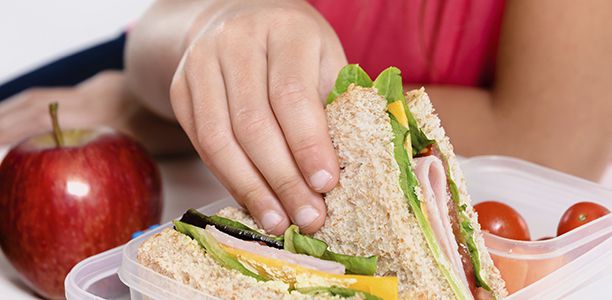A new study has found promising signs that Australian children are eating less salt, but researchers say much more needs to be done if Australia is to meet the Federal Government’s commitment to reach the World Health Organization’s target of a 30 per cent reduction in population salt intake by 2025.
The study published in the Journal of the Academy of Nutrition and Dietetics is the first to look at the most recent national data describing salt intake from food sources for both children and adolescents.
Lead author Dr Carley Grimes from the Institute for Physical Activity and Nutrition (IPAN) at Deakin University, said there was good and bad news in the findings.
“We wanted to see whether Australian children are eating less salt since the previous government-led Food and Health Dialogue voluntary sodium content targets were set in 2009,” Dr Grimes said.
“These targets were set for nine processed food categories that contribute the most salt to the Australian diet, including bread and processed meats, and are intended to encourage food manufacturers to add less salt to processed foods
“We found that while there has been a small, but significant 8 per cent decline in overall salt intake, this was coupled with a similar significant 5 per cent reduction in the amount of food children were eating.
“When we account for the effects of energy, this means that there was only a 2 per cent drop in salt intake and more than 80 per cent of children are still eating more salt than is recommended for good health.”
Interestingly, the IPAN researchers also found the amount of salt from different food groups varied over the survey periods.
“Encouragingly most of the food groups where we saw reductions in salt, (gravies and savoury sauces, breakfast cereals, processed meat, pastries and bread) were targeted under the previous voluntary salt reformulation scheme,” Dr Grimes said.
“However, there were also some food groups targeted under the scheme, such as cheese and soup, that showed no change in the amount of salt that they contributed to children’s diets over this period, or in fact showed an increase in the amount of salt they contributed, such as sausages and savoury biscuits.
“We know that some food companies have done a lot of great work in this area, however our findings suggest more could be done to ensure Australian children are not eating excessive amounts of salt.
“There is good evidence showing that eating too much salt during childhood can raise children’s blood pressure, which can in turn increase the risk of high blood pressure as an adult. Also, children can become accustomed to the taste of highly salted foods so it is important that we have strategies in place to limit the exposure of salt in the diet in early life.”
Salt reformulation targets have been under review since 2015 under the Government’s current Healthy Food Partnership, but to date no renewed targets have been finalised.
“To sustain reformulation efforts and achieve Australia’s commitment to a 30 per cent reduction in population salt intake by 2025, there is an urgent need for setting new targets for the amount of salt that can be added to processed foods,” Dr Grimes said.
(Source: Deakin University, Journal of the Academy of Nutrition and Dietetics)










